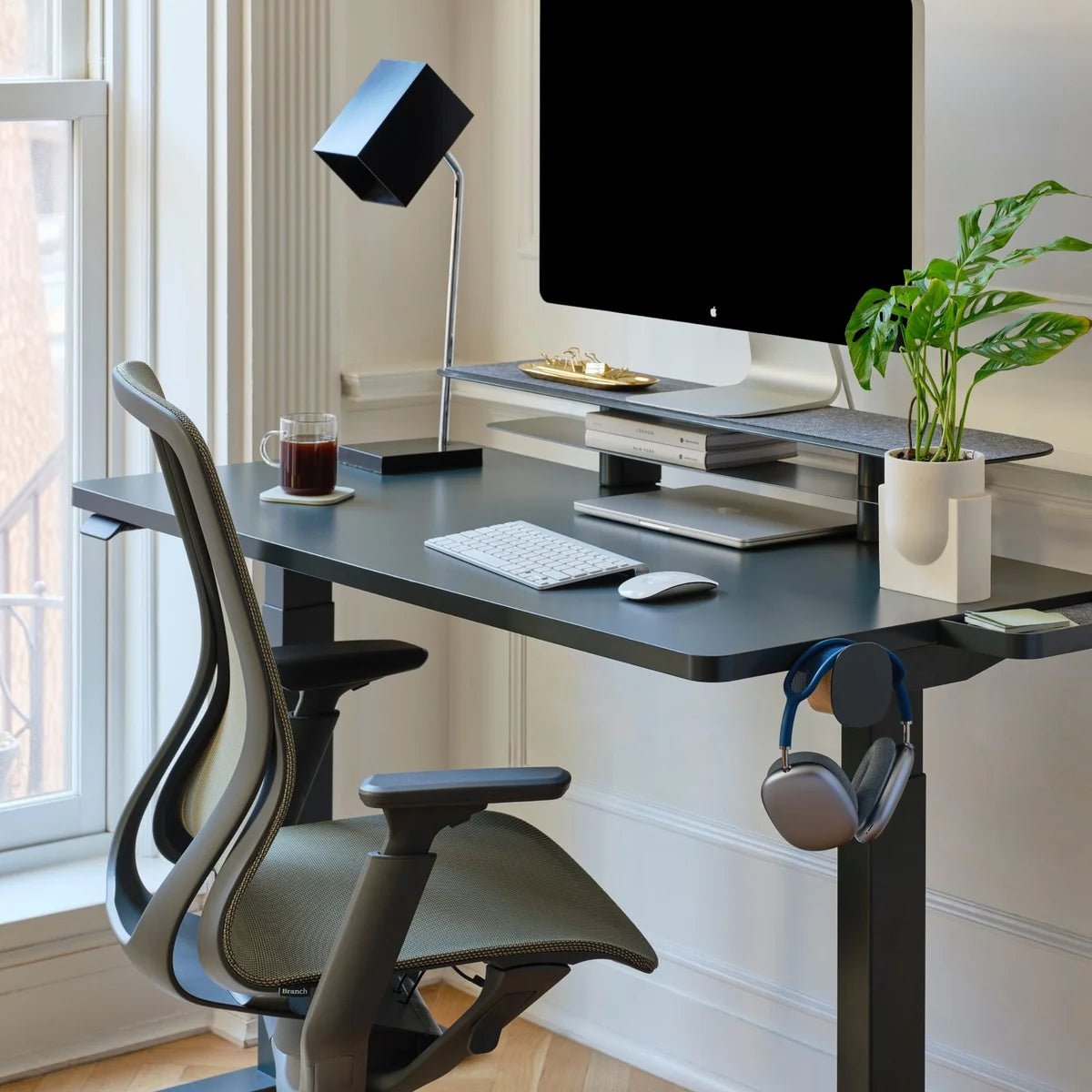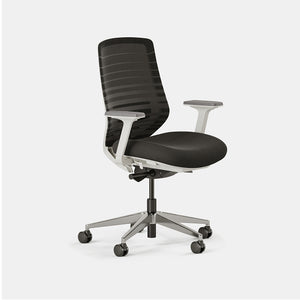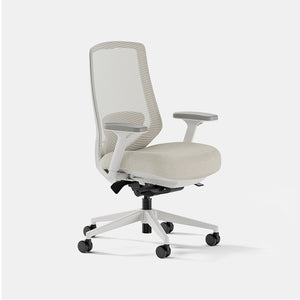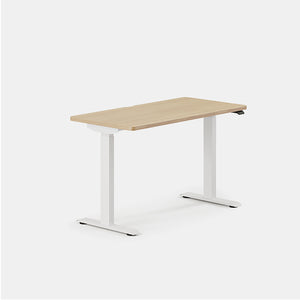There are many benefits to splitting your work time between sitting and standing. Learn the proper standing desk posture as well as other ergonomic tips.
Benefits of Standing Desks
- Weight gain and obesity
- Heart disease
- Metabolic issues and Type 2 diabetes
- Long-term mortality risk
- Cancer
- Upper and lower back pain
- Shoulder and neck pain
Negative Effects of Poor Posture
- Neck and back pain
- Aches, pains, and muscle fatigue
- Headaches
- Rounded shoulders, potbelly, and a forward- or backward-leaning head position
- Abnormally bent knees when standing or walk
Standing Desks 101
- Shoes: Put on (or take off) your shoes so that you're wearing what you plan to wear while you work. Shoes add height, and you need to consider this, even if it's less than an inch.
- Mat: Stand on your standing desk mat or anti-fatigue mat if you plan to use one. Like your shoes, your mat will add height that you need to account for when finding the proper adjustment.
- Height: Bend your elbows at a 90-degree angle (or a 100-degree angle if that’s what you prefer) and measure the distance from the floor (not your mat) to your wrists. Alternately, keep your arms straight and measure the height to your elbow — either method will place your desk at approximately elbow height.
Standing Desk Posture
- Standing position: Stand with your spine in a neutral position, allowing for the natural curvature of your spine. You should be able to draw a straight line from your head, through your neck, torso, and legs, and down to your ankles. Keep your feet hip-width apart.
- Head position: You should be looking straight ahead, with your cervical spine (your neck) in a natural position. Think about balancing your head directly over your pelvis, if it helps, and hold your chin parallel to the floor.
- Hand position: Place your hands and wrists on your keyboard tray and mouse, bending your elbows between 90 and 100 degrees. Adjust your desk slightly down if your arms are bent less than 90-degree angles and slightly up if your arms are extended more than 100-degree angles (or as needed for comfort).
- Shoulder position: Draw your shoulder blades in and down on your back as though you're trying to pinch a quarter between them. Then, relax your shoulders and neck to prevent pain while maintaining this position.
- Distance: The top of your computer screen should be at eye level and an arm's length away (18-30 inches) from your face to prevent eye strain. You may require a monitor arm to raise your computer monitor to the correct height.
How Often to Stand Up
- One-to-one ratio: This ratio means you spend equal time sitting and standing — for example, 45 minutes sitting, 45 minutes standing.
- One-to-two ratio: This is when you sit twice as much as you stand — for example, 30 minutes sitting, 15 minutes standing.
- One-to-three ratio: This ratio involves sitting three times as much as you stand — for example, 45 minutes of sitting, 15 minutes of standing.
How You Sit Matters Too
- Hips, knees, ankles: Your hips, knees, and ankles should be at 90-degree angles. This may require you to adjust your chair up or down. Keep your feet flat on the floor or your footrest.
- Head position: Balance your head directly over your shoulders and pelvis and sit with your back in a neutral position. Look straight ahead and position your monitor with the top of the screen at eye level.
- Arms, shoulders, and elbows: Your arms should hang down at your side, gently resting on your armrests, and your elbows should be bent between a 100- and 90-degree angle. Additionally, keep your shoulders relaxed, down, and back.
Standing Desk Tips and Tricks
- Try a footrest: You can use a footrest under your desk while standing to rest your feet and adjust your position. Assume good standing desk posture, then place one foot forward on the footrest.
- Accessorize: Use desk accessories to make your workstation more accommodating. For example, you might use a free-standing power dock to help with cable management while keeping your tech charged.
- Ask your employer for help: Whether you're setting up a home office or your on-site office, ask your HR department if you can get help fixing your ergonomics. A home office stipend, for example, may provide you with money to cover new office equipment.
- Don't forget movement breaks: Add movement breaks regularly in addition to sitting and standing. Try taking a 10-minute movement break for every hour spent working. During your break, walk around, stretch, and stay active to help your body recover — and avoid screens during this time to give your eyes a break, too.
Don't Forget a Good Standing Desk
On new furniture, exclusive sales and more.














